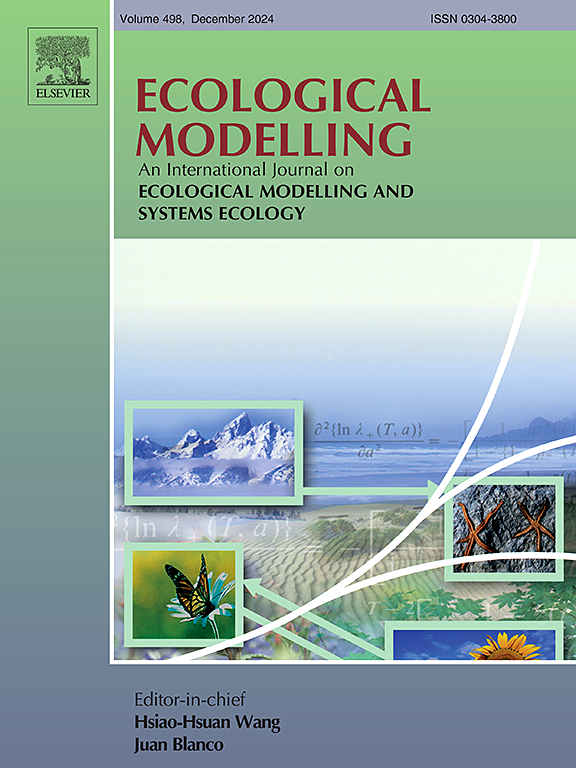Predicting budbreak dates for ‘Delaware’ grape considering chilling and heat requirements using PhenoFlex
IF 2.6
3区 环境科学与生态学
Q2 ECOLOGY
引用次数: 0
Abstract
Owing to recent climate change, budbreak in the ‘Delaware’ grape (Vitis vinifera × (V. labrusca × V. aestivalis)) in Osaka, Japan, is occurring earlier. Therefore, the development of phenology models for budbreak in ‘Delaware’ based on the relationship between budbreak and temperature (a key environmental factor) is important for both short-term (vineyard management or frost risk assessment) and long-term (assessment of suitable land or effect of future climate change) needs. The recently developed PhenoFlex modeling framework combines the Dynamic model and Growing Degree Hour models as sub-models for chilling and heat requirements with a flexible transition, showing good prediction accuracy in several temperate woody perennials. However, case studies of PhenoFlex in grapes are absent. In this present study, we aimed to evaluate the applicability of the PhenoFlex modeling framework to grapes using ‘Delaware’ dataset from 1963 to 2023 in Osaka, Japan. PhenoFlex showed a high prediction accuracy, with root mean square error values ranging from 2.28 to 2.79 days. Furthermore, the PhenoFlex model with the Dynamic model parameters adjusted using our data showed higher prediction accuracy and robustness than the model with the original parameters of the Dynamic model, indicating that the Dynamic model parameters should be set for each target species or varieties. The PhenoFlex modeling framework was effective in predicting budbreak in ‘Delaware’ grape although some points of chill response curves derived from the parameters fitted using PhenoFlex were unrealistic.
求助全文
约1分钟内获得全文
求助全文
来源期刊

Ecological Modelling
环境科学-生态学
CiteScore
5.60
自引率
6.50%
发文量
259
审稿时长
69 days
期刊介绍:
The journal is concerned with the use of mathematical models and systems analysis for the description of ecological processes and for the sustainable management of resources. Human activity and well-being are dependent on and integrated with the functioning of ecosystems and the services they provide. We aim to understand these basic ecosystem functions using mathematical and conceptual modelling, systems analysis, thermodynamics, computer simulations, and ecological theory. This leads to a preference for process-based models embedded in theory with explicit causative agents as opposed to strictly statistical or correlative descriptions. These modelling methods can be applied to a wide spectrum of issues ranging from basic ecology to human ecology to socio-ecological systems. The journal welcomes research articles, short communications, review articles, letters to the editor, book reviews, and other communications. The journal also supports the activities of the [International Society of Ecological Modelling (ISEM)](http://www.isemna.org/).
 求助内容:
求助内容: 应助结果提醒方式:
应助结果提醒方式:


